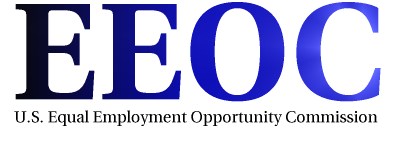Search
The EEOC has released its enforcement playbook for the next four years. Want a peek?
You’re almost there. The only thing that can stop you now is this Calvin Harris tune that’ll get stuck in your head all day.
Whew! You made it!
Yesterday, the EEOC announced (here) updates to its existing Strategic Enforcement Plan. Under the existing plan, which expires at the end of this year, the EEOC has articulated six priorities:
- Eliminating barriers in recruitment and hiring;
- Protecting immigrant, migrant and other vulnerable workers;
- Addressing emerging and developing employment discrimination issues;
- Enforcing equal pay laws;
- Preserving access to the legal system; and
- Preventing harassment through systemic enforcement and targeted outreach.
Under the new plan, which runs from 2017-2021, the EEOC will emphasize the following six areas:
- Eliminating barriers in recruitment and hiring;
- Protecting vulnerable workers, including immigrant and migrant workers, and underserved communities from discrimination;
- Addressing selected emerging and developing issues;
- Ensuring equal pay protections for all workers;
- Preserving access to the legal system; and
- Preventing systemic harassment.
Now wait just a minute! Those new priorities don’t look so, um, new.
[Cue music]
Ah, but then I scrolled to the bottom of the EEOC press release:
Notable updates made by this SEP are the addition of two areas to the emerging issues priority:
1) issues related to complex employment relationships in the 21st century workplace; and 2) backlash discrimination against those who are Muslim or Sikh, or persons of Arab, Middle Eastern or South Asian descent, as well as persons perceived to be members of these groups, as tragic events in the United States and abroad have increased the likelihood of discrimination against these communities.
Number 2 is fairly self-explanatory. But what could the EEOC mean by “complex employment relationships in the 21st century workplace.”
Ah… ah… ach-Uber!
Yes, if you dig into the new Plan, you’ll see this explanation:
Because of the nature of this priority category, the Commission may choose to add or remove particular issues as the law develops, through an interim amendment to the SEP. The following issues currently fall within this category:…(d) Clarifying the employment relationship and the application of workplace civil rights protections in light of the increasing complexity of employment relationships and structures, including temporary workers, staffing agencies, independent contractor relationships, and the on-demand economy.
Between the EEOC’s Strategic Enforcement Plan, the Department of Labor’s Misclassification Initiative, and the National Labor Relations Board’s position that misclassification of employees as independent contractors is a violation of the National Labor Relations Act, are you sensing a theme here among the federal labor and employment law watchdogs?
Yes, when you misclassify your employees as independent contractors, your workplace problems can multiply quickly.
For more on independent contractors and employees, check out this prior post.
 The Employer Handbook Blog
The Employer Handbook Blog



